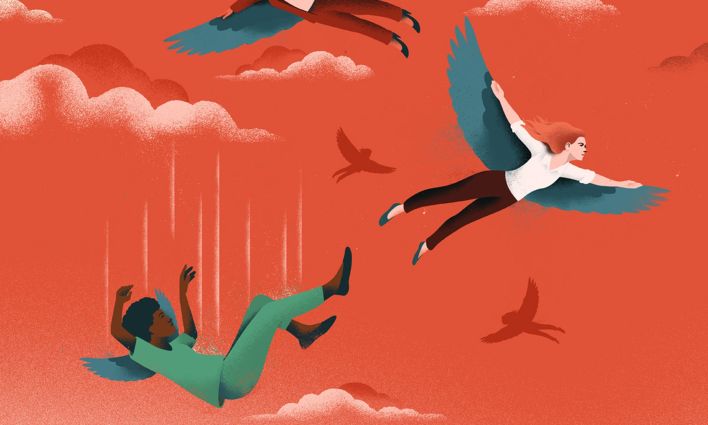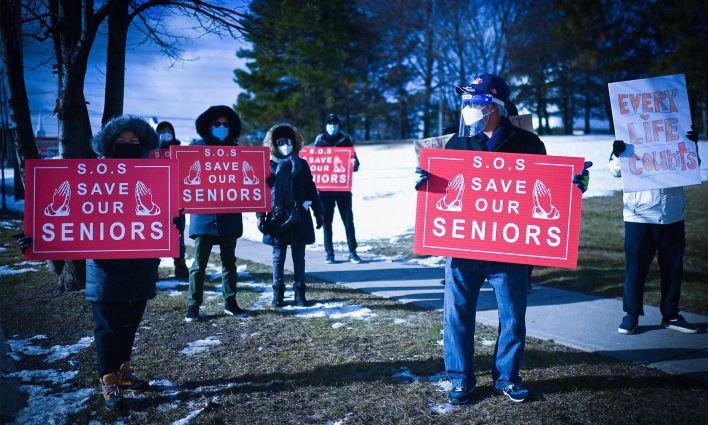“Everyone knows pestilences have a way of recurring in the world, yet somehow we find it hard to believe in ones that crack down on our heads from the blue sky.”
Albert Camus, The Plague
There have been many deadly pandemics throughout history, including Plague of Justinian, the Black Plague, the Spanish flu and, more recently, AIDS and, of course, COVID-19. These global afflictions have reshaped history, demographics and politics. They have wreaked havoc on everything from the economy to personal relationships. Plagues, big and small, have also sparked much reflection, from dry academic tomes through to literary masterpieces, writings that can inform, console and infuriate.
Here are five books that have helped me understand the power of plagues and contextualize the current pandemic.
1. The Great Influenza: The Story of the Deadliest Pandemic in History, by John M. Barry (2004)
Many, many books have been written about the misnamed Spanish flu of 1918-19, but The Great Influenza is one of the best. Reading it today is downright eerie because it vividly describes battles over lockdowns and mask-wearing, the heroic efforts of health workers in overwhelmed hospitals, and overflowing morgues, all issues that could be ripped from current newspaper headlines. The most sobering aspect, however, is Barry’s detailed recounting of post-pandemic political fallout. Once the immediate threat of the flu passed (there was no vaccine; so many people were infected that the spread simply burned itself out), the lingering economic hardship sparked a nationalistic reaction and political and economic chaos that ranged from the Roaring 20s to The Great Depression, and ultimately fostered the rise of Hitler and another world war.
2. The Coming Plague: Newly Emerging Diseases in a World Out of Whack, by Laurie Garrett (1994)
Early in the COVID-19 pandemic, journalist Laurie Garrett was called everything from the coronavirus Cassandra to the prophet of the pandemic. That’s because in her book The Coming Plague, she predicted that the world would see increasingly hard-to-control outbreaks of diseases like Ebola, influenza and, yes, coronavirus, all of which have come to pass. She is much more scientist than soothsayer, but recognized that climate change, urbanization, globalization are all created the perfect conditions for both the emergence of new pathogens, their global spread, and potential for destruction.
3. Life in the Time of Cholera, by Gabriel Garcia Marquez (1985)
In a 1988 interview with the New York Times, the Nobel Prize winning Colombian author said: “Plagues are like imponderable dangers that surprise people. They seem to have a quality of destiny.” Love in the Time of Cholera is not a book about cholera, but about lovesickness and human frailty. But, at a time when so many people are isolated and lonely, when our closest relationships become a lifeline (and sometimes a curse), these sweeping tales of romance, heartbreak, death, the torments of memory and the inexorability of old age, all seem painfully timely. Besides, what better way to spend long lockdown days and nights than immersed in a tome that has been called one of the greatest love stories ever told?
4. Plague: A story of smallpox in Montreal, by Michael Bliss (1991)
By plague standards, the smallpox outbreak that killed 3,224 people in Montréal in 1885 is small potatoes. But historian Michael Bliss’ meticulously researched Plague is, as a review Maclean’s magazine said, “a cautionary tale about human panic and procrastination in the face of disaster.” The response to smallpox was, like the response to COVID-19, slow and highly politicized, and the impacts were felt principally by the marginalized. Further, resistance to vaccination prolonged the plague and drove up the death rate.
5. Polio: An American Story, by David M. Oshinsky (2006)
In the years after the Second World War, a time of tremendous medical progress, the age-old illness polio hung over society like a dark cloud, stalking children. David Oshinsky captures that tension and reminds us that fears are shaped by cultural context. The mad race to create a polio vaccine, which ended with banner headlines like “Polio Is Conquered,” was unparalleled in history – until the recent supercharged efforts to develop a coronavirus vaccine. The sobering footnote here is that, after victory was declared, there were numerous setbacks, and lingering wounds, as will undoubtedly see with Covid-19. And the pledge to eradicate polio, one of the most significant public health campaigns in history, remains ever-elusive, a reminder that plagues are not so easily defeated.







